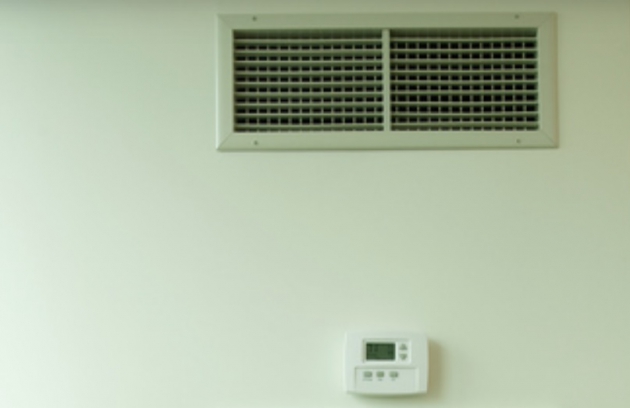In winter, many of us close our doors and windows to settle in feeling warm and cozy. While spending extra time at home can feel great when it’s cold outside, it does make the air quality inside your home even more crucial. This can be challenging as there is reduced ventilation. So, here we’ll explore some tips to help you improve your indoor air quality this winter.
Address the Dry Winter Air:
If you live in a cold climate, you’re likely to be aware that the winter tends to bring cracked, dry lips and skin. You may also suffer from a dry, painful nose that makes you feel particularly uncomfortable, especially if you have a cough or cold.
Dry air can cause issues beyond having dry skin. When your throat and nose are dry, you have an increased chance of getting sick. Our immune systems rely on the mucus membranes in our nose to catch germs before they can enter our systems. In fact, research studies have found low humidity levels actually make flu viruses more infectious.
Many people assume that the warm air produced by your furnace is what makes your home feel dry, but the dryness actually comes in from outside.
When the outside temperatures are below freezing, it means that the air is very dry. This cold, dry air can find its way into your home, even if you have a well insulated home. After all, you need to come in and out of your home and each time you open your door, you’re allowing that cold, dry air in.
Fortunately, there are some simple solutions to address the dry winter air. Firstly, consider using a humidifier. This could be a single unit or whole house humidifier, which can add moisture to the air. You can also improve the moisture levels in your home by keeping houseplants. Some plants can remove a few air pollutants, but their primary benefit is that they not only brighten up your home, but also hold and gradually release moisture via their soil. So, if you have regularly watered houseplants, they can act as a natural humidifier.
Be Wary of CO:
It is quite common for people to use a wood stove or other type of stove to provide additional heat in winter. Although these appliances can generate plenty of heat, they can also provide potentially dangerous air pollutants.
Combustion of wood and other fuels produces carbon monoxide or CO as a by product. This is an odorless and colorless gas that impedes the body’s ability to process oxygen. If there are high CO levels in your home, you may experience dizziness, headaches, impaired thinking, and it can lead to death.
Furnaces, water heaters and stoves all generate CO, but since they tend to burn quite efficiently, it tends to be a smaller amount. These pieces of equipment need to be properly installed, vented and maintained to prevent CO building up inside your home. Since wood stoves do not burn with such efficiency, they produce more CO.
Additionally, since you are not likely to use your wood stove all through the year, there could be maintenance issues, such as a blocked flue, it could allow CO to leak into the home. So, have your wood stove checked every season by an experienced professional and keep a working CO detector in your home.
Deal With Pet Hair Build Up:
We all love our furry friends, but they are likely to be spending far more time inside during winter. So, if they have a thick coat, shedding and pet hair can become an issue for your indoor air quality.
An effective way to deal with pet hair build up is to regularly brush and groom your pet. According to the American Kennel Club excessive bathing can cause overproduction of oils, but brushing and grooming can help to contain pet hair. You can collect loose pet hair on your grooming brush and then throw it in the trash, rather than allowing it to accumulate in your HVAC ductwork.
You will still need to frequently clean, wiping down surfaces using a damp cloth to collect dust and pet hair, along with vacuuming upholstery, rugs and carpets.
Improve Your Ventilation and Air Circulation:
In winter, doors and windows tend to be closed, with storm windows down. Some homeowners even install plastic insulation to seal off their windows. While this is great for heating efficiency, it significantly reduces the air circulation inside your home.
One of the most basic ways to increase your indoor air quality is to open a window and allow some fresh air in. But, this is not always possible in winter.
If the weather outside is too cold to open a window, you’ll need to clean more frequently. You don’t want dust particles traveling around your home again and again. So, mop, vacuum and wipe down surfaces to remove as many pollutants as possible where they settle. This will prevent them from being kicked back into the air if someone walks through the room or air blows from the furnace.
You will also need to ensure that you regularly replace your HVAC filters. These filters can become clogged with dust, dirt and other debris, reducing airflow around your ductwork and allowing these pollutants to be reintroduced into the air.
You may also want to consider professional duct cleaning. These specialists use professional grade equipment to reach all the ductwork and ensure everything is thoroughly clean.
Consider an Air Purifier:
Finally, you may want to consider using an air purifier. These devices remove common pollutants including dust, pet hair and VOCs from your indoor air. There are different air purifier technologies, so you will need to consider which is the best for your home.
If you have concerns about your air quality and HVAC system this winter, be sure to speak to your local HVAC technician. An experienced professional can evaluate your system and provide recommendations for improvements.

